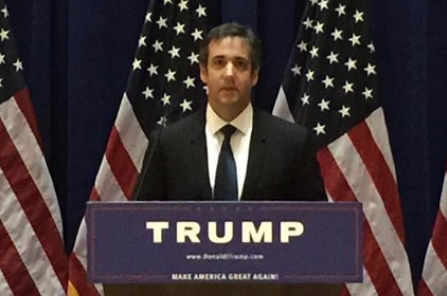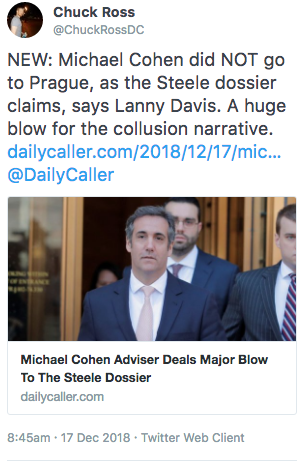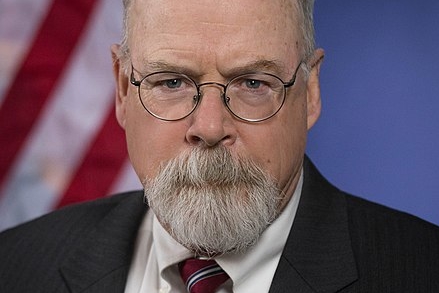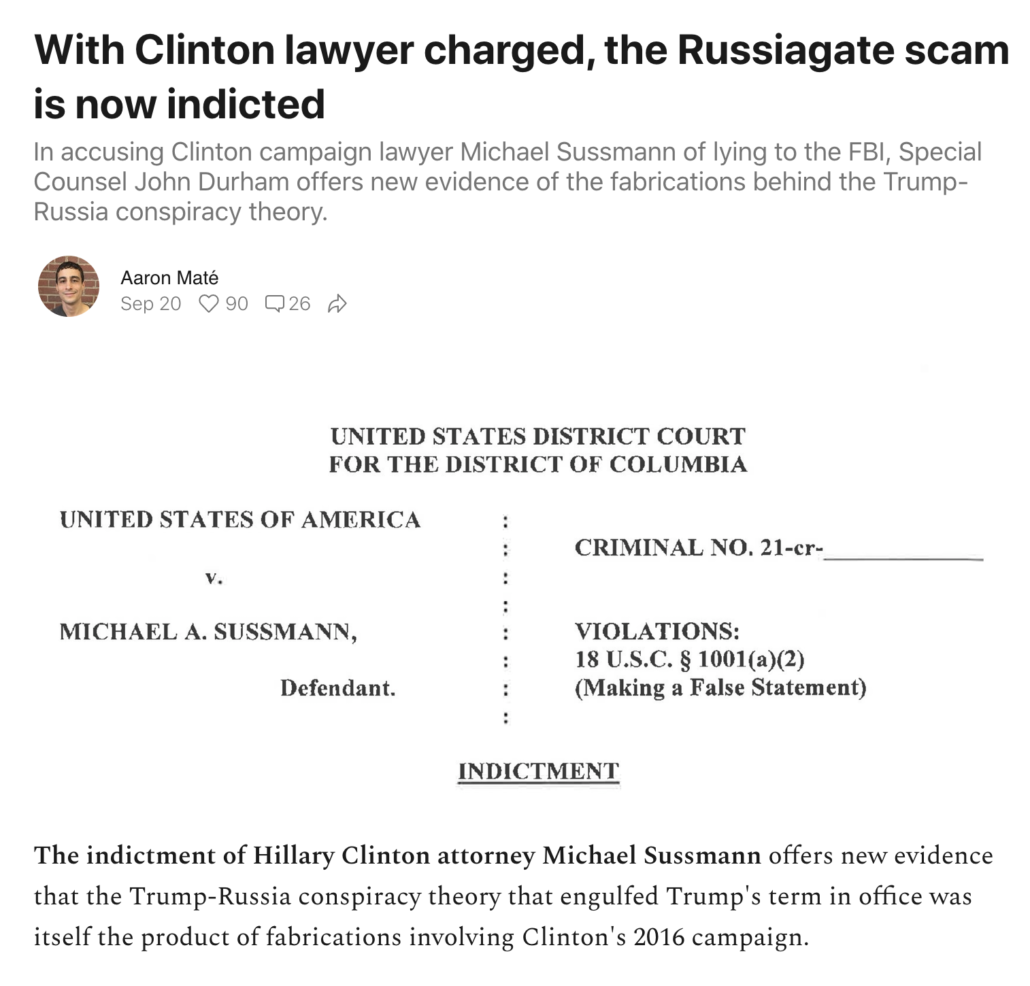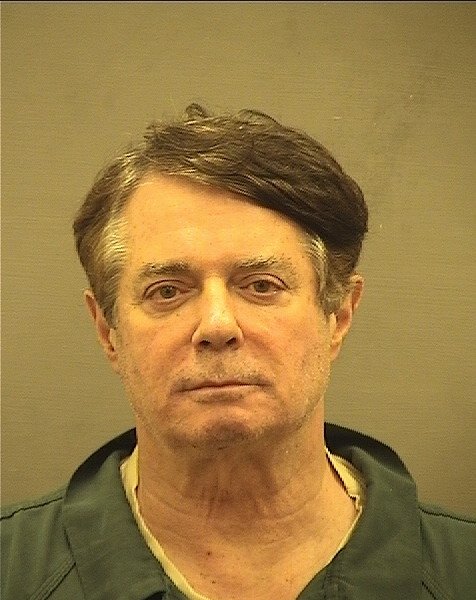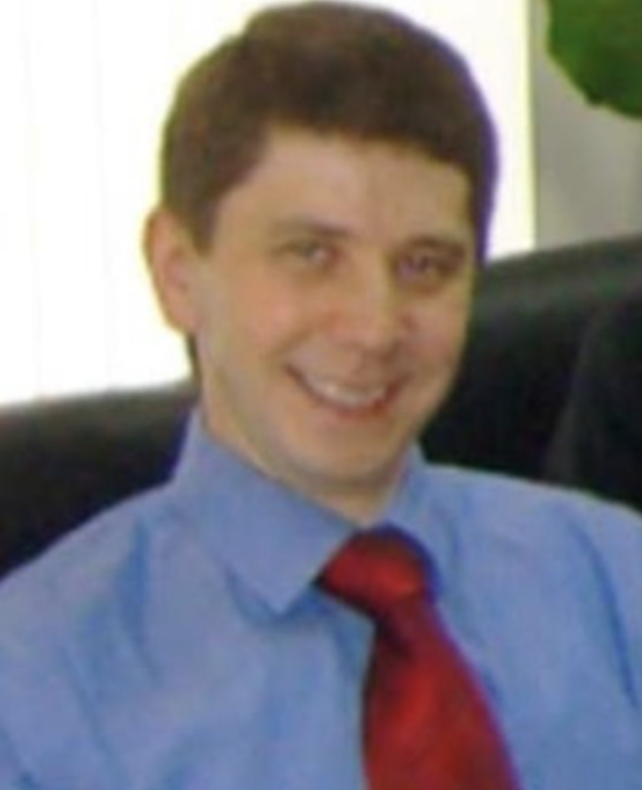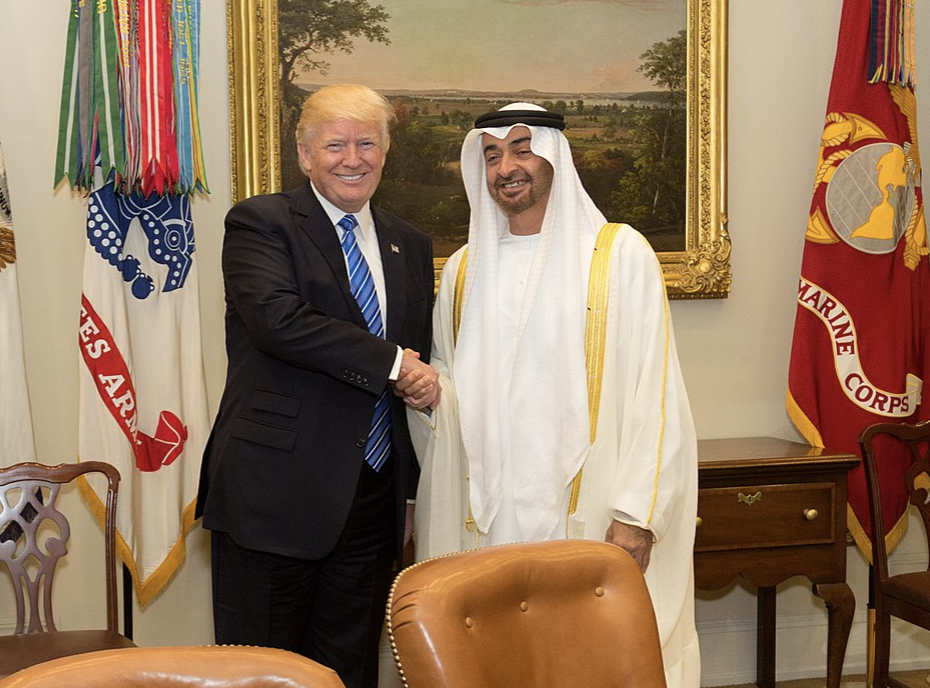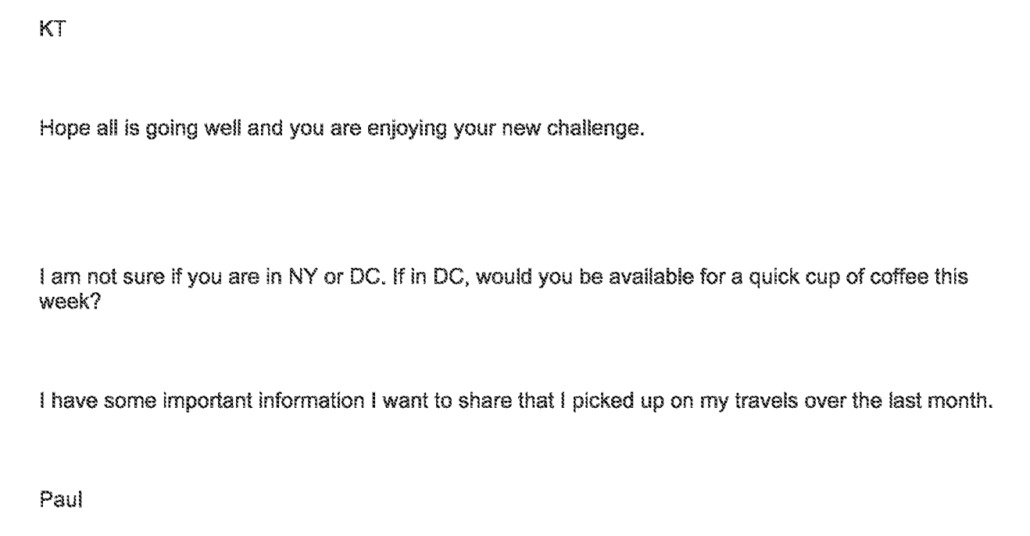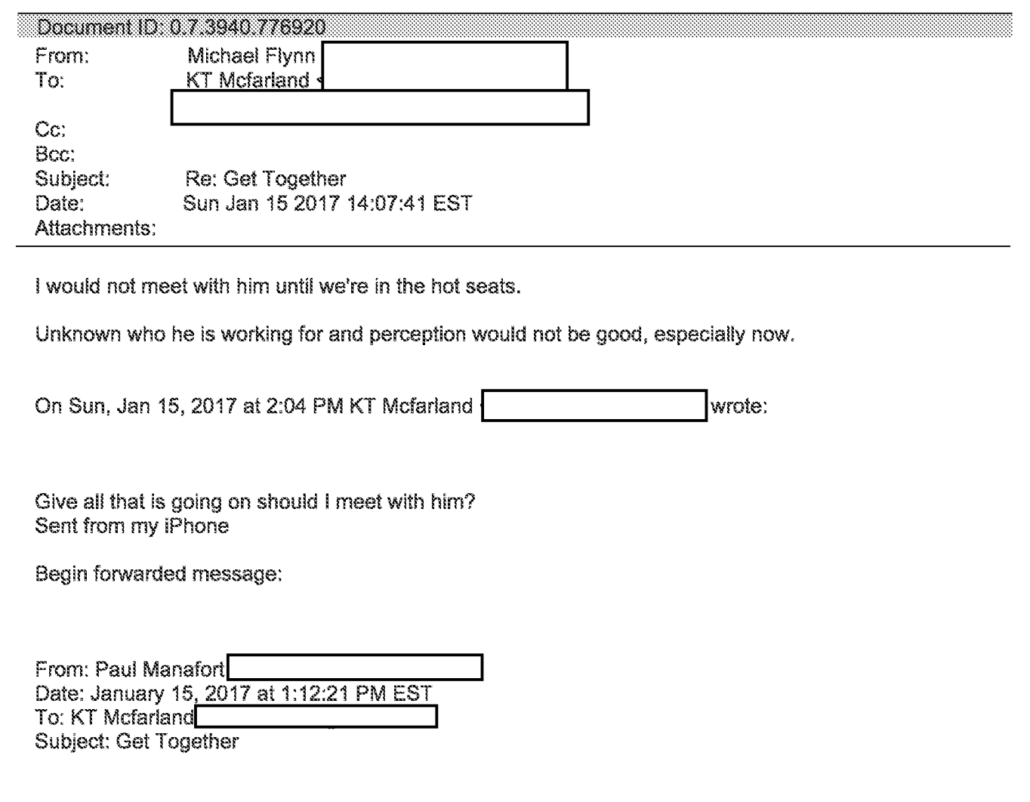The Disinformation that Got Told: Michael Cohen Was, in Fact, Hiding Secret Communications with the Kremlin
CJR was kind enough to invite me on to discuss media accountability and the Steele dossier with Erik Wemple last week.
On the show, I made the argument that it’s not enough to identify the things that didn’t, but should have, shown up in the dossier: like George Papadopoulos getting advance warning of the Russian operation not far from Christopher Steele’s office, or a dirt-for-sanctions-relief meeting in Trump Tower attended by a client of Fusion GPS, or a deputy for Steele client Oleg Deripaska, Konstantin Kilimnik, trading Trump’s campaign manager $19 million in debt relief to obtain the campaign’s strategy.
Given the way that, on July 30, 2016, Deripaska used Steele (via his lawyers) to make Manafort more vulnerable just days before, on August 2, 2016, Deripaska used that vulnerability to carry out a key step in the election operation, it is reasonable to consider whether any disinformation in the dossier became a key part of the Russian operation. That makes it important to look at the stories that did get told in it, to understand how they related to other aspects of the operation.
In the CJR podcast, Erik Wemple was — as he has been in the past — skeptical.
Wheeler: If, in fact, the dossier is full of disinformation, which is what every Republican in Congress believes and what I think is largely the case, then the question is not, what was the access. The question was, why did Oleg Deripaska learn about it, as the DOJ IG Report suggests happened, why did he learn about it before the second report? Why did two Russian intelligence people learn about it before the second report, and why did the stories that get told get told? So, yes, there’s the absence of, you know, Papadopoulos in London, but the stories of Michael Cohen in Prague which are the, the, the most easily debunked, do, are near misses on things that were really happening in the Russian operation. Michael Cohen was in fact covering up stuff about Russia at the time — he was covering up the Trump Tower deal. Michael Cohen was also covering stuff having to do with sex at the time. You put those two together and you’ve got the Prague thing. That’s a pretty near miss.
Wemple: Is it though? The allegation in the dossier was that he was meeting with Kremlin representatives — as I recall — to —
Wheeler: And he called up the Kremlin and got Putin’s involvement in the Trump Tower deal.
Wemple: But he met in Prague to cover up or figure out how to pay hackers, if I recall the allegation.
Wheeler: Yeah yeah yeah. Yup.
Wemple: I don’t know. I don’t see it as being that close to what Michael Cohen actually did but we can —
Wheeler: Right, but do you deny that Michael Cohen was covering up stuff about Russia that involved, actually, the Kremlin?
Wemple: Well, it’s clear that he was involved in keeping quiet the Trump Tower —
Wheeler: Okay. Which involved the Kremlin. And involved a GRU officer.
Wemple: Unquestionably, no question.
Wheeler: Okay. So that’s my point. Russia knew that. Russia knew that when Trump made a statement in July of 2016 that he had no business in Russia — which by the way, Durham is reacting against; he’s trying to claim it was unreasonable for cybersecurity researchers to respond to that and say, that’s very alarming, which was very alarming. As soon as Trump made that comment, in July of 2016 (and he had made it a bunch of times before that), Russia knew that Michael Cohen and Donald Trump and a number of other people were lying, publicly, about this ridiculously lucrative deal that involved the Kremlin and involved a GRU officer. And so the Prague story is absolutely garbage. And that came from Olga Galkina, right?
Wemple: It did. Who’s a middle school friend of Danchenko
Wheeler: Right. She’s central to the Danchenko indictment. One of the things that Durham charges Danchenko with is trying to hide how obvious, how much Galkina knew about that. And he didn’t hide it at all. I think that allegation is completely, is completely easily debunked if you actually read the interview. But my point is that, in fact, Michael Cohen was covering up communications with the Kremlin and with a GRU officer. And Russia knew that. And if those Michael Cohen reports which, by January 2017, the FBI believed to be disinformation, so if those were disinformation, why did we get that form of disinformation, when in fact Michael Cohen — and if you read Danchenko, Galkina knew, right away, Michael Cohen’s name. She was ready for it, so those questions. If you want to talk about media accountability, those questions have to be asked as well.
The details of any disinformation in the dossier — the possibility that Russian intelligence deliberately planted false stories about secret communications Michael Cohen had with the Kremlin — are important because they may have served the overall Russian operation. In some cases, such as the claim that Carter Page was Paul Manafort’s purported go-between with Russia rather than Konstantin Kilimnik, might have provided cover. The claims that Russia had years old FSB intercepts of Hillary they planned to release as kompromat, rather than recently stolen emails from John Podesta, would similarly provide cover. In others, disinformation might have worked in the same way Oleg Deripaska’s double game did, increasing the vulnerability of Trump’s people even while making it more likely they’d do what Russia wanted.
I have argued in the past that the Trump Tower deal wasn’t important because it showed that Trump was pursuing a real estate deal while running for President. Rather, it was important to the success of the Russian operation because it gave Russia proof, before any hint of the Russian operation became public, that Donald Trump would be willing to work, in secret, with sanctioned banks and a GRU officer to make an impossibly lucrative real estate deal happen.
[T]here is a piece of the Cohen statement of the offense the significance of which hasn’t gotten sufficient attention. That’s the detail that Dmitry Peskov’s personal assistant took detailed notes from a 20-minute January 20, 2016 phone call with Cohen, which led to Putin’s office contacting Felix Sater the next day.
On or about January 16, 2016, COHEN emailed [Peskov]’s office again, said he was trying to reach another high-level Russian official, and asked for someone who spoke English to contact him.
On or about January 20, 2016 , COHEN received an email from the personal assistant to [Peskov] (“Assistant 1 “), stating that she had been trying to reach COHEN and requesting that he call her using a Moscow-based phone number she provided.
Shortly after receiving the email, COHEN called Assistant 1 and spoke to her for approximately 20 minutes. On that call, COHEN described his position at the Company and outlined the proposed Moscow Project, including the Russian development company with which the Company had partnered. COHEN requested assistance in moving the project forward, both in securing land to build the proposed tower and financing the construction. Assistant 1 asked detailed questions and took notes, stating that she would follow up with others in Russia.
The day after COHEN’s call with Assistant 1, [Sater] contacted him, asking for a call. Individual 2 wrote to COHEN, “It’s about [the President of Russia] they called today.”
Cohen had lied about this, claiming that he had emailed Peskov’s public comment line just once, but gotten no response.
This language is important not just because it shows that Cohen lied. It’s important because of what Cohen would have said to Peskov’s assistant. And it’s important because a written record of what Cohen said got handed on to Putin’s office, if not Putin himself.
[snip]
[W]hen Cohen called Peskov’s assistant, he would have told her that he was speaking on behalf of Donald Trump, that Trump remained interested in a Trump Tower in Moscow (as he had been in 2013, the last time Putin had dangled a personal meeting with Trump), and that on Trump’s behalf Cohen was willing to discuss making a deal involving both a sanctioned bank (whichever one it was) and a former GRU officer.
The impossibly lucrative real estate deal was useful to the Russian operation because it ensured that, even before GRU hacked the DNC, Putin had collected receipts showing that Trump’s personal lawyer had secretly been in discussions about a deal brokered by a GRU officer and sanctioned banks for Trump’s benefit. Trump would want to (and in fact did) keep this fact from voters because it would have proven he was lying about having business interests in Russia. The attribution of the DNC hack to the GRU made Trump’s secret more inflammatory, because it meant Trump stood to benefit personally from the same people who hacked his opponent. Trump and Cohen couldn’t have known all that when Cohen called Peskov in January. But Russia did. Indeed, that may well have been the entire point.
The Cohen-in-Prague story includes outlines of Trump’s real secret: contact by Trump’s personal lawyer with the Kremlin and those who conducted the DNC hack. But the Cohen-in-Prague story displaced the key details of that secret, providing a place and personal details that would be even more damning, but also easier to debunk.
In fact, when Michael Cohen broke the law (by lying to Congress) to cover up this secret, when the Trump Organization withheld from Congress the most damning documents about it, when Trump told his most provable lie to Mueller about it, they (along with Felix Sater and others) used the Cohen-in-Prague story as an easy way to issue true denials while limiting admissions (and lying) about the extent of the Trump Tower deal. Here’s what I described, in August 2017, about the way Cohen used Prague denials to pre-empt his limited (and therefore false) admissions of his pursuit of the Trump Tower deal.
There are real, unanswered questions about the provenance of the document as leaked by BuzzFeed. Some of the circumstances surrounding its production — most notably its funders and their claimed goals, and Steele’s production of a final report, based off voluntarily provided information, for free — raise real questions about parts of the dossier. I think it quite likely some parts of the dossier, especially the last, most inflammatory report (which accuses Cohen of attending a meeting where payments from Trump to the hackers that targeted the Democrats were discussed), were disinformation fed by the Russians. I believe the Intelligence Community is almost certainly lying about what they knew about the dossier. I believe the Russians know precisely how the dossier got constructed (remember, a suspected source for it died in mysterious circumstances in December), and they expect the exposure of those details will discredit it.
So while I think there are truths in the dossier, I do think its current form includes rumor and even affirmative disinformation meant to discredit it.
With that said — and remembering all the time that shortly after this letter got written, documents were disclosed showing Cohen was involved in brokering a deal that Sater thought might get Trump elected — here’s my analysis of the document.
[Cohen’s letter to Congress] is pitched around the claim that HPSCI “included Mr. Cohen in its inquiry based solely upon certain sensational allegations contained” in the Steele dossier. “Absent those allegations,” the letter continues, “Mr. Cohen would not be involved in your investigation.” The idea — presented two weeks before disclosure of emails showing Cohen brokering a deal with Russians in early 2016 — is if Cohen can discredit the dossier, then he will have shown that there is no reason to investigate him or his role brokering deals with the Russians. Even the denial of any documents of interest is limited to the dossier: “We have not uncovered a single document that would in any way corroborate the Dossier’s allegations regarding Mr. Cohen, nor do we believe that any such document exists.”
With that, Cohen’s lawyers address the allegations in the dossier, one by one. As a result, the rebuttal reads kind of like this:
I Did Not Go to Prague I Did Not Go to Prague I Did Not Go to Prague I Did Not Go to Prague
Cohen literally denies that he ever traveled to Prague six times, as well as denying carefully worded, often quoted, versions of meeting with Russians in a European capital in 2016. Of course that formulation — He did not participate in meetings of any kind with Kremlin officials in Prague in August 2016 — stops well short of other potential ties to Russians. And two of his denials look very different given the emails disclosed two weeks later showing an attempt to broker a deal that Felix Sater thought might get Trump elected, including an email from him to one of the most trusted agents of the Kremlin.
Mr. Cohen is not aware of any “secret TRUMP campaign/Kremlin relationship.”
Mr. Cohen is not aware of any indirect communications between the “TRUMP team” and “trusted agents” of the Kremlin.
The Cohen-in-Prague story provided an easy way for Cohen to issue true denials. But it also magnified the risk of the secret — a secret Russia knew — they were keeping, because they committed crimes to keep the secret.
There can be little doubt that, if the Cohen-in-Prague story was deliberate disinformation, it was wildly successful. Indeed, most Trump supporters — including many of the people debunking the dossier full time — seemed to believe that if they could prove that Cohen never went to Prague, that by itself would amount to proof that Trump had no ties with Russia in 2016, a claim every bit as outlandish as the pee tape.
If the Cohen-in-Prague story was deliberate disinformation, it was spectacularly successful, both for obscuring the Trump Tower discussions and for creating an easily debunked stand-in for Trump’s real cooperation, distracting from Manafort’s role.
Years later, we now know there were reasons to think the Cohen-in-Prague story was deliberate disinformation from the start. A declassified DOJ IG footnote describes that, even before the Igor Danchenko interviews in January 2017, FBI had received intelligence suggesting that was the case.
In addition to the information in Steele’s Delta file documenting Steele’s frequent contacts with representatives for multiple Russian oligarchs, we identified reporting the Crossfire Hurricane team received from [redacted] indicating the potential for Russian disinformation influencing Steele’s election reporting. A January 12, 2017, report relayed information from [redacted] outlining an inaccuracy in a limited subset of Steele’s reporting about the activities of Michael Cohen. The [redacted] stated that it did not have high confidence in this subset of Steele’s reporting and assessed that the referenced subset was part of a Russian disinformation campaign to denigrate U.S. foreign relations. [italicized language declassified]
If it was disinformation, Danchenko’s source for it, his childhood friend Olga Galkina, seems to have been prepared. When Danchenko described the sourcing of the report, he explained that that Galkina was “almost immediately” familiar with Cohen when he asked.
[Danchenko] began his explanation of the Prague and Michael Cohen-related reports by stating that Christopher Steele had given him 4-5 names to research for the election-related tasking. He could only remember three of the names: Carter Page, Paul Manafort and Michael Cohen. When he talked to [Galkina] in the fall of 2016 — he believes it was a phone call — he rattled off these names and, out of them, he was surprised to hear that [Galkina] immediately [later [Danchenko] softened this to “almost immediately”] recognized Cohen’s name.
[snip]
Danchenko believes he had 2, maybe even 3, conversations with [Galkina] on this topic later in October. Nothing on Prague and Cohen was collected during the [redacted] trip in [redacted]. The first conversation is the one during which he believes [Galkina] noted her recognition of Cohen’s name. The second conversation is the one in which she discussed Prague, the visit of Cohen plus three other individuals, and the meeting with the Russia side. There may have been a third conversation on the topic, but [Danchenko] could not recall exactly and said that they had also talked about “a private subject.”
Several details in the Danchenko indictment explain why Galkina might be prepared.
Charles Dolan, the PR Executive whom Danchenko introduced to Galkina that spring, had worked directly with Dmitry Peskov for years and remained in touch with Putin’s Press Secretary in conjunction with an event he was helping plan in October 2016. During the summer, Dolan recommended Galkina to Peskov for a job in the Presidential Administration.
[F]rom in or about 2006 through in or about 2014, the Russian Federation retained PR Executive-I and his then-employer to handle global public relations for the Russian government and a state-owned energy company. PR Executive-I served as a lead consultant during that project and frequently interacted with senior Russian Federation leadership whose names would later appear in the Company Reports, including the Press Secretary of the Russian Presidential Administration (“Russian Press Secretary-I”), the Deputy Press Secretary (“Russian Deputy Press Secretary-I”), and others in the Russian Presidential Press Department.
[snip]
In anticipation of the June 2016 Planning Trip to Moscow, PR Executive-I also communicated with Russian Press Secretary-I and Russian Deputy Press Secretary-I, both of whom worked in the Kremlin and, as noted above, also appeared in the Company Reports.
[snip]
Additionally, on or about July 13, 2016, Russian Sub-Source-I sent a message to a Russia-based associate and stated that PR Executive-I had written a letter to Russian Press Secretary-I in support of Russian-Sub-Source-I’s candidacy for a position in the Russian Presidential Administration.
As it was, Danchenko attributed of any mention of Peskov in the dossier to Galkina. But Galkina’s real ties to Peskov, the person who knew more about Michael Cohen and Trump’s secret than anyone else in Russia — who knew they were pursuing an impossibly lucrative real estate deal involving sanctioned banks and a retired GRU officer with Peskov’s help — had been enhanced in months leading up to that reporting. Galkina’s ties to Peskov would had been enhanced in a way that may have made her source relationship with Danchenko even more evident to Russian spooks (though it would always have been easy to discover).
That is, Dolan’s business relationships with the Russian government may not be important because Galkina appeared to share his enthusiasm for Hillary — the reason Durham included garden variety business networking in the midst of the Danchenko indictment. Rather, it may be important because it made her a much more lucrative target for disinformation.
Olga Galkina was in a position where, if Russia had wanted to tell the secret they knew Trump was keeping from voters, she might have learned the truth behind Cohen’s real, hidden communications with the Kremlin, a truth that voters had a right to know. Instead, she told a false story that mirrored certain aspects of the story that Cohen would do prison time in a failed attempt to hide, but which instead became an easily debunked stand-in for the real story of Trump’s enthusiasm for Russia’s efforts to tamper in America’s democracy.
If the dossier was significantly disinformation, then all Americans were victims of it. It turned a legitimate concern about real Russian interference into American elections into one of the biggest sources of political polarization in recent history. Like the social media trolling from Internet Research Agency, it stoked divisions, with the added benefit that it led significant numbers of Trump voters to trust the Russians who were feeding that disinformation more than they trust the current President. One viral Twitter thread earlier this year even claimed that the dossier (and therefore any Russian disinformation in it) led directly to and justified the attack on the Capitol on January 6. As such, disinformation injected into the dossier should increasingly be treated as a potential central part of the 2016 Russian influence operation — perhaps its most successful and lasting part.
Erik Wemple has spent a lot of time pushing CNN into committing the same reporting failures with the Danchenko indictment as they did on the dossier itself. But that has left largely unexamined the question of why the stories that did get told got told, which may be far more important to understanding how Russia was willing to screw both Paul Manafort and Hillary Clinton.
Danchenko posts
The Igor Danchenko Indictment: Structure
John Durham May Have Made Igor Danchenko “Aggrieved” Under FISA
“Yes and No:” John Durham Confuses Networking with Intelligence Collection
Source 6A: John Durham’s Twitter Charges
John Durham: Destroying the Purported Victims to Save Them
John Durham’s Cut-and-Paste Failures — and Other Indices of Unreliability

